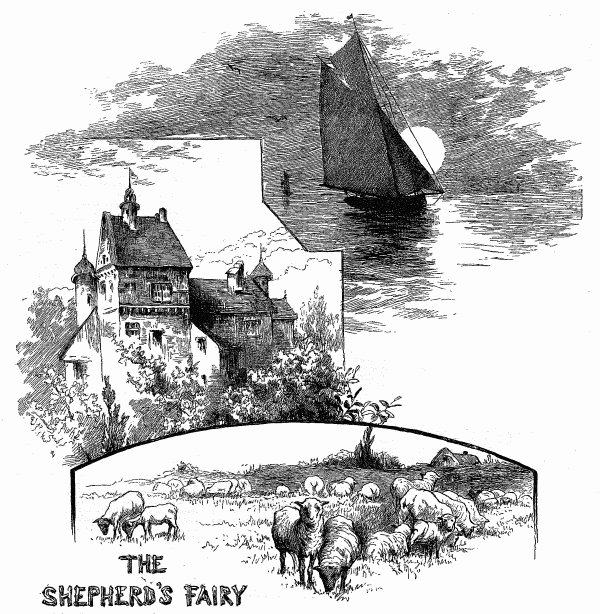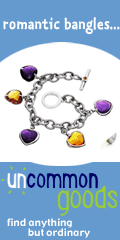|
All care
has been given to present this pattern in the original form.
KnitHeaven
is not responsible for errors.

(Picture above from, "The Shepherd's Fairy" Chapter 1,
in "The Girl's Own Paper," October, 1886)
source for Embroidery Materials and Wool Descriptions
below:
"Enquire Within Upon
Everything"
1894
1860. Materials
Every sort of embroidery material may be used for embroidering upon. The
most common are muslin, cambric, velvet, satin, cloth, and leather.
1861. Application
The simplest style of embroidery is that termed Application,—that
is, where the pattern is in one material, laid on another which forms
the ground. In this way muslin is worked on net, velvet is laid on
cloth, or on another velvet, and cretonne designs cut out and laid on
another material, the edges being either sewed over, or ornamented with
fancy cord, braid, gold thread, or any other appropriate material.
1862. Braiding
Another very easy style of ornamentation is that known as braiding.
Children's dresses are worked with narrow silk or worsted braid, the
latter being also used for ladies' aprons, flounces, &c. Gold and silver
braid enter largely into various sorts of decorated needlework, and the
Victoria braid, of cotton, which has something of the appearance of
satin stitch, is generally known.
1863. Stitches in Braiding
There is considerable art required to achieve putting on the Victoria
braid evenly and firmly. The stitches should be taken across the braid.
This makes it lie flat.
1864. Elaborate Embroidery
But the most elaborate kinds of embroidery are those which represent
flowers, fruit, and other devices on any material; and these may be
divided into white and coloured embroidery.
1865. Broderie Anglaise
White embroidery, or embroidery on muslin, is used for a great variety
of articles of ladies' dress. The simplest is termed Broderie Anglaise.
In this style, the pattern is either in satin stitch, or from left to
right, formed of holes cut out of the muslin, and sewed over with
embroidery cotton. The great art in working broderie is to make the
holes all of the same size, and to take the stitches closely and
regular.
1866. Satin Stitch
Satin stitch is a smooth raised work, used for leaves, flowers, &c. It
is done by first tracing the outlines accurately with soft cotton, then
taking stitches from point to point of the part to be raised, so as to
have the greatest thickness of cotton in the centre, and sewing it over,
in stitches taken close together, but slightly slanting, and completely
across the part outlined. The veining of leaves is generally formed by
taking the stitches from the vein to the edge, first on one side and
then on the other. The borders of embroidered muslin collars, &c., are
usually finished with buttonhole stitch, worked either the width of an
ordinary buttonhole, or in long stitches, and raised like satin stitch.
Eyelet holes are made by piercing round holes with a stiletto, and
sewing them round.
1867. Fancy Stitches
There are many fancy stitches introduced into muslin work, but these
require to be practically taught.
1868. Frame for Embroidery
The kind of frame on which muslin is most easily worked, consists of two
hoops of wood, about eight inches in diameter. One is rather smaller
than the other. On it the muslin is stretched, and the larger one being
slipped over it, and fitting tightly, keeps the muslin in its place.
1869. Embroidery on Satin, &c.
Satin and velvet are embroidered in coloured silks, gold and silver
bullion, pearls, &c. A very fashionable style is the work with ombre
or shaded silks.
1870. Netting Silk in Embroidery
The most delicate kinds of embroidery are worked with fine netting silk,
one strand of which is drawn out. This makes the silk appear softer and
richer.
1871. Shading in Silks
It requires considerable care to work well with ombre silks, to avoid
incorrect shading. Nature should be followed as closely as possible. Not
only must the form be carefully preserved, but the lights and shades
must be disposed in an artistic manner. For instance: the point of a
leaf is never the darkest part, nor should the lower leaves and flowers
of a group of the same kind be light.
1872. Materials used in Embroidery and Canvas Work
The materials for canvas work and embroidery may be classed under the
names of wool, silk, chenille, and braid; beads, straw, and a variety of
other fancy materials, are also brought into use. A knowledge of the
proper mode of using them, and the varieties of each which are made, is
one of the most useful things it is possible for the amateur
needle-woman to become acquainted with. We will, therefore, take them in
their order.
1873. Wool
German wool (or Berlin wool, as it is commonly called) is the most
beautiful material manufactured for canvas-work. The vast variety of
shades, the exquisite tints produced, the softness and evenness of the
fabric, are beyond all praise. We speak of Berlin wool as it ought to
be; for no article is more frequently of inferior quality. From
damp, or bad packing, or many other causes, it is frequently crushed and
injured, and in that state is not fit to be used for good work. Berlin
wool is supposed to be all dyed, as well as made, abroad; at present a
large proportion is entirely produced in our own country, which is
little, if at all, inferior to the foreign. Berlin wool is made only in
two sizes, 4-thread and 8-thread; unless the latter is specified in
directions, the other is always implied.
Berlin wools are either dyed in one colour, or in shades of the same
colour, or (very rarely) in shades of several colours.
Technically, a silk or wool dyed in shades of the same colour, going
gradually from light to dark, and from dark to light again, is termed an
ombre, or shaded wool or silk, whereas chine is the
term employed when there are several colours used. There are,
also, what are called short and long shades; that is, in
the former the entire shades, from the lightest to the lightest again,
will occur within a short space, a yard or so; whereas, in long
shades the gradation is much more gradually made.
We notice these apparently trifling differences that readers may
comprehend the importance of obtaining precisely the proper materials
for each design. If we prescribe a certain article, it is because it
and no other will give the effect. Transparent, white, or silver beads
are usually worked with white silk, but clear glass beads, threaded on
cerise silk, produce a peculiarly rich effect by the coloured silk
shining through transparent glass. The silk used must be extremely fine,
as the beads vary much in size. A change of material, which might appear
of no consequence whatever, would completely spoil the effect of the
design.
1874. Fleecy Wool
Fleecy wool is the sort of wool used for jackets and other large
articles. Some of the tints are quite as brilliant as those of Berlin
wool. It is made in 3, 4, 6, 8, and 12 threads, and is much cheaper than
German wool. It does very well for grounding large pieces of canvas
work.
1875. Shetland Wool
Shetland wool is very fine and soft, is much used, and prized for shawls
and neckties and for veils.
1876. Eis Wool
A pure German wool of silky brightness, is used for the same purpose as
Shetland wool excepting for veils. It is also used instead of silk for
embroidering on velvet, as tea cosies, &c.
1877. Andalusian Wool
Andalusian wool is a medium wool, less thick than Berlin wool, is used
for cuffs and shawls.
1878. Other kinds of Wool
There are also other names given to wools by the vendors or
manufacturers of them: for instance, "The Peacock Wool" and "The Coral
Wool" are trade marks, and not particular wools.
1879. Scotch Fingering Wool
Scotch fingering wool is used for knitting stockings and socks, and
gentlemen's kilt hose.
1880. Thin Lambs' Wool and Wheeling Yarn
Scotch yarns, used principally for children's socks and stockings.
1881. Merino Wool
Merino wool is the produce of a Spanish breed of sheep. The wool was
introduced into this country about the close of the last century. George
III. was a great patron of this breed. French Merino is made from this
peculiariy soft wool; so also Berlin wool, used for canvas embroidery.
1882. Angola Wool
The produce of an African breed of sheep; is a soft hairy wool. Is used
for making Angola shawls and gloves, valued for their extreme softness
and warmth. These were popular till the cotton manufacturers introduced
a very poor imitation make entirely of cotton.
1883. Camel-hair Wool
Camel-hair wool is the production of the llama, or al-lama, a native of
South America. This ruminant animal resembles in its nature, but not in
its form, a camel. The back and sides of the llama are clothed with fine
long woolly hairs, becoming smooth, silky, and shining towards the tips,
the general colours being of a uniform bright brown. The native Indians
use it in the manufacture of stuffs, ropes, bags, and mats.
1884. Alpaca
Al-Paco produces the alpaca wool. This creature is also a species of
camel, though different in shape. Cavier regarded the paco as a variety
of the llama; so also the vicugua. The llama is generally used as a
beast of burden, while the former are used chiefly for their flesh and
wool.
Advertisement:

Please
do not post this pattern to another website. However, Please feel free
to post a link to this page:
http://www.knitheaven.com/vintagepatterns/wool.htm |








